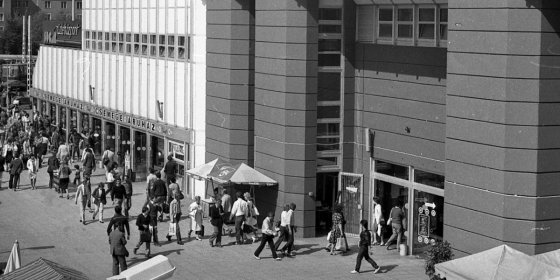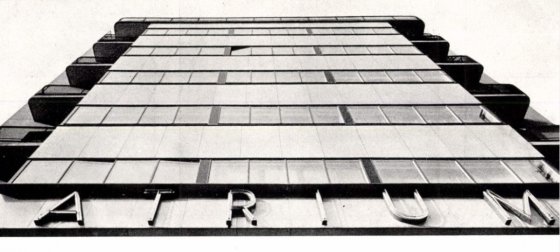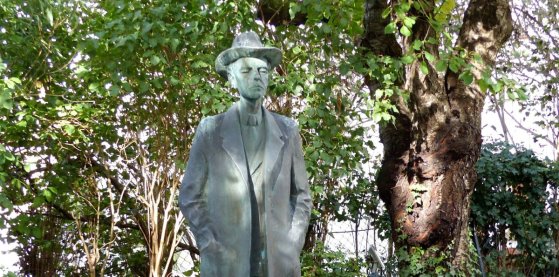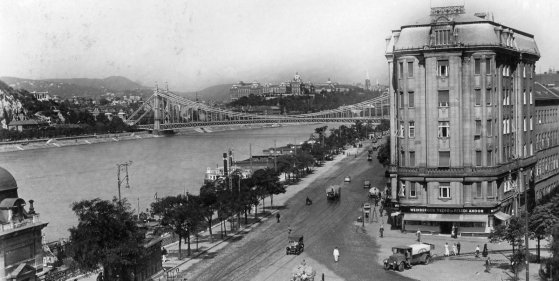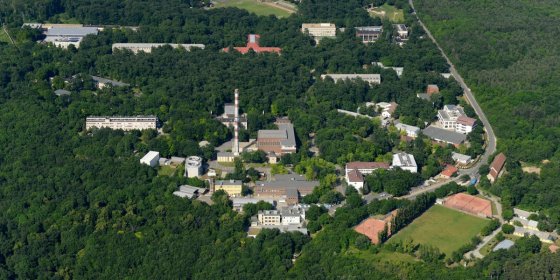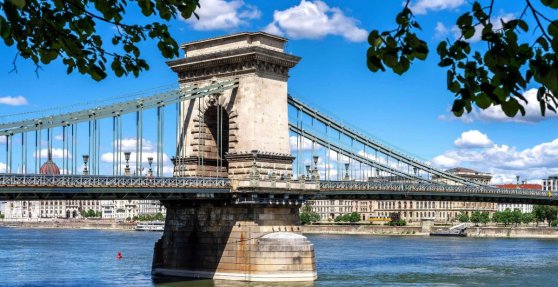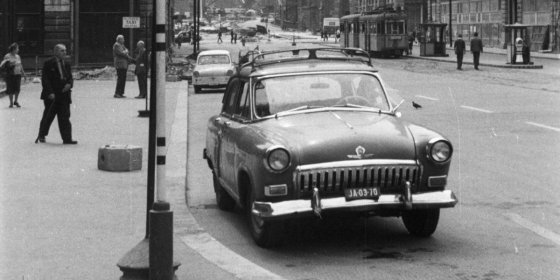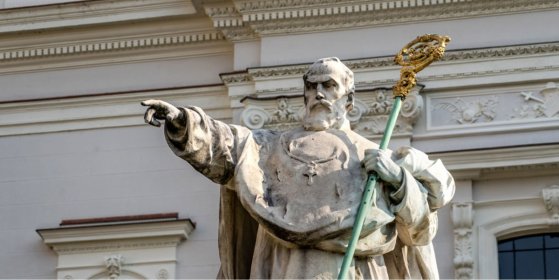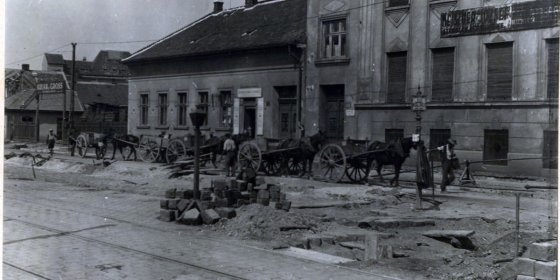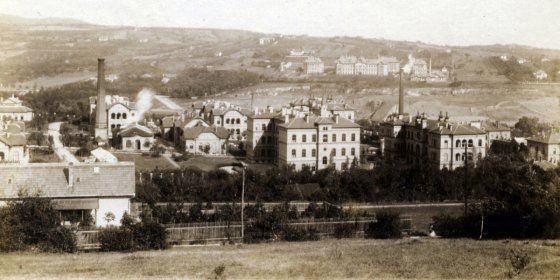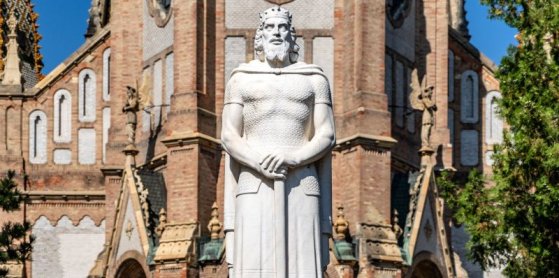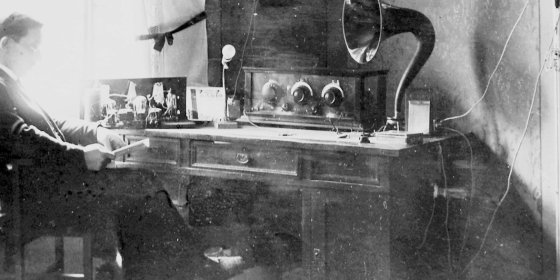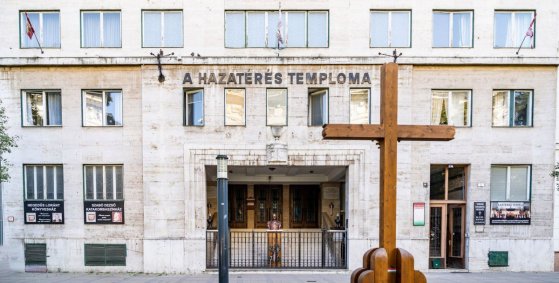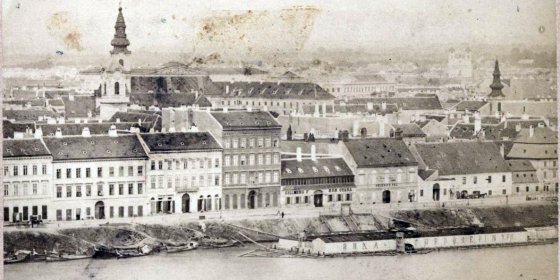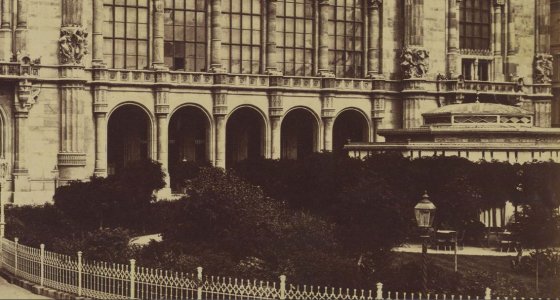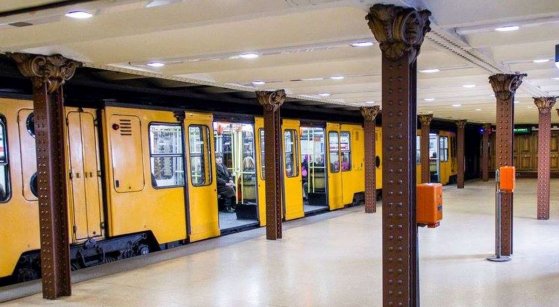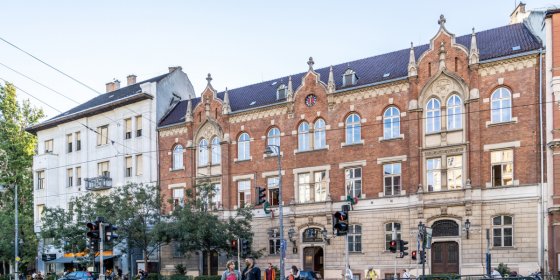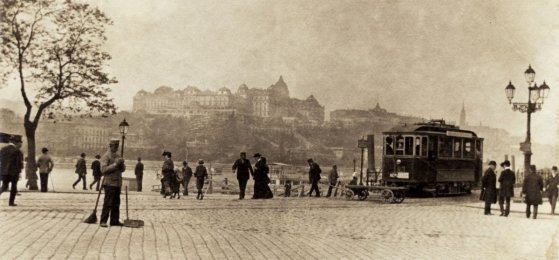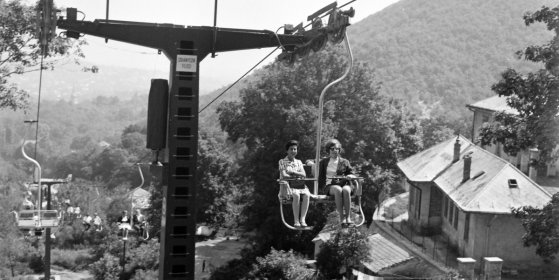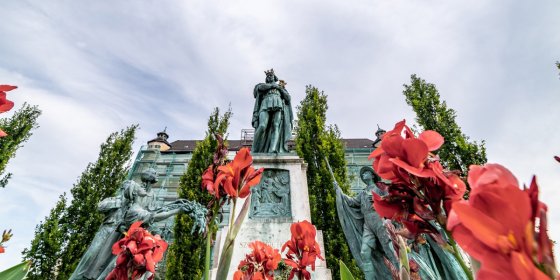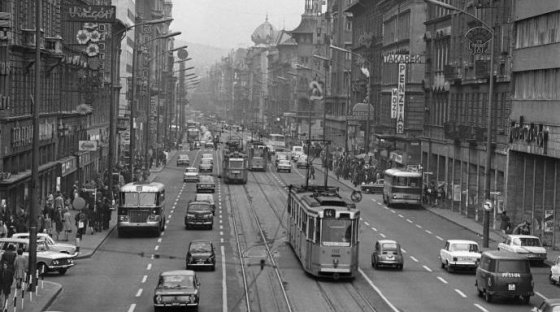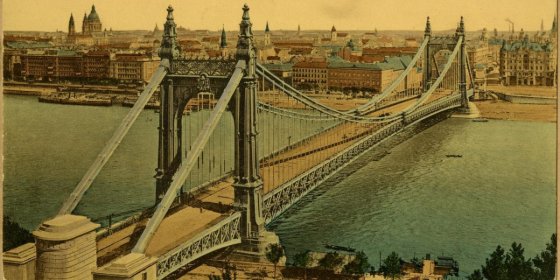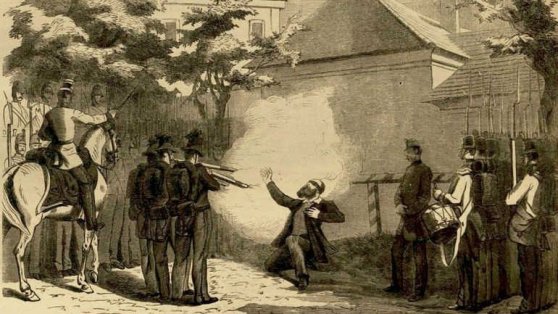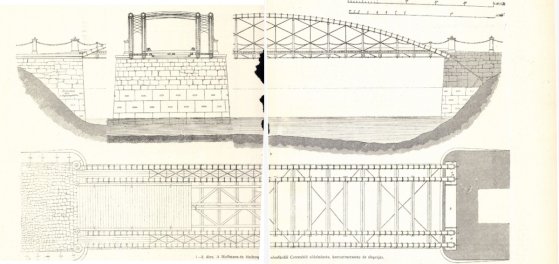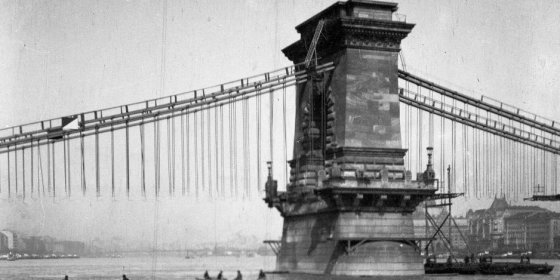 The „intertwined history” of the bridges and the city of Budapest
Which ideas and events have shaped the fate of bridges of Budapest and the cityscape? Alongside many other interesting facts, this question is also answered this newly published book by the Budapest City Archives, which introduces the history of bridges in Budapest.
The „intertwined history” of the bridges and the city of Budapest
Which ideas and events have shaped the fate of bridges of Budapest and the cityscape? Alongside many other interesting facts, this question is also answered this newly published book by the Budapest City Archives, which introduces the history of bridges in Budapest.
histories
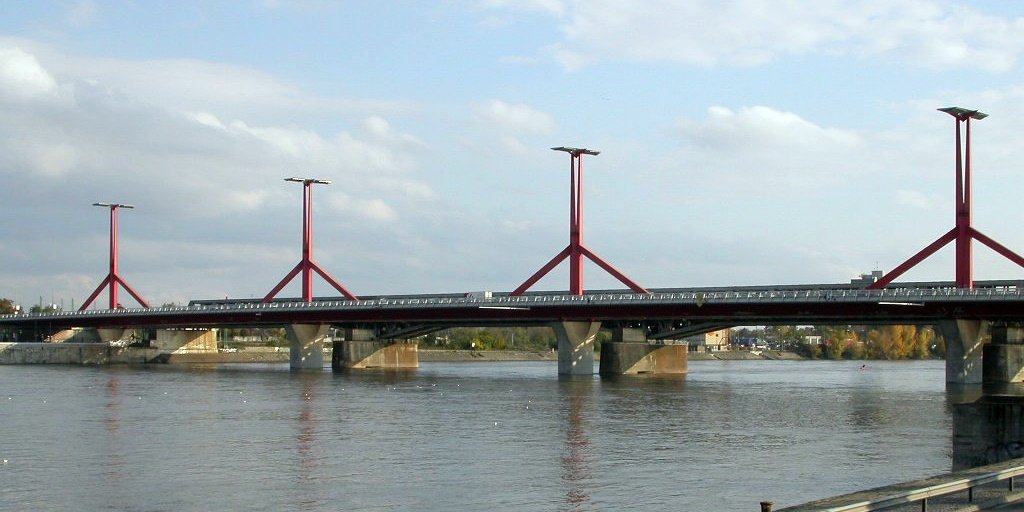 The memento of a World Fair never held – Rákóczi Bridge turns 25
The memento of a World Fair never held – Rákóczi Bridge turns 25
October 29, 2020 at 9:00 AM
Budapest's first permanent urban bridge built since the end of World War II was completed 25 years ago after 30 different plans were drawn up and 20 years of preparation. It was not welcomed unanimously by Budapest's residents, and the world fair that had been the reason behind its location was never held.
Jump over to Sugár – Forty years of an iconic shopping centre
October 26, 2020 at 12:00 PM
The socialist shopping centre opened on örs Vezér Square forty years ago. While Terminal originally one the contest announced to find a name, the city council eventually named the 29-thousand square metre shopping centre Sugár. Filled with the state-owned shops of the era the store brought several novelties. Home delivery could be requested on certain items, pre-orders could be placed, and the upper floors were wheel-chair accessible. The hit slogan, Csak egy ugrás a Sugár (loosely, 'jump over to Sugár') became the iconic phrase of a generation.
A modern cinema for Buda – Atrium Movie Theatre completed 85 years ago
October 24, 2020 at 3:00 PM
Átrium was a unique cinema in every respect. It differed from the others in Budapest not only because of its modern building but also in how it was operated. The elegant new auditorium seated 800 people and offered a new quality in both sound and elegance when opened in 1935.
Exhibition of aerospace history opened in Petőfi Csarnok 35 years ago
October 20, 2020 at 9:00 AM
The upper floor of the Petőfi Csarnok housed the Aviation and Space Exploration exhibit of the Transport Museum for thirty years. The aeroplane used by Charles IV in his attempt to return to the Hungarian throne in 1909 and was on display, as was the World war I reconnaissance aircraft manufactured by the Lloyd factory in Aszód. Relics of the space age included the crew capsule used by Bertalan Farkas and Valeri Kubasov to return to Earth from the Salyut-6 space station. When the Petőfi Csarnok was closed, the exhibition was also forced to leave.
Joyous I do's – 125 years of civil marriage in Budapest
October 16, 2020 at 1:00 PM
Laws on state registries and civil marriage were passed in 1894 but only entered into force a year later on 1 October 1895. The novelty of the now everyday ceremony caused such a rush that the three registrars in Budapest at the turn of the century could barely cope with the number of marriage requests. Where and how did the first civil marriage in Hungary unfold?
Béla Bartók left Hungary 80 years ago and died five years later
October 13, 2020 at 9:00 AM
Bartók is one of the greatest composers of the 20th century. His life was deeply connected to Budapest. His career began the city, and he left for the United States from here 80 years ago. On the 75th anniversary of his death pestbuda.hu visited the most important sites of his life in Budapest.
Liveable Budapest? The first plans were made 80 years ago
October 11, 2020 at 1:00 PM
Budapest adopted its first modern urban development plan in 1940. The massive 150-page document took eight years to prepare. Its main goal was to provide a livable environment for the inhabitants of the quickly growing city. The plan accounted for an increase in motor traffic, marked routes for underground railways, and pushed for architecturally unified residential areas. It also contained plans for the creation of community gardens in the densely populated areas of Pest and designated the embankment as an expressway for vehicles.
Livable Budapest? The first plans were made 80 years ago
October 11, 2020 at 1:00 PM
Budapest adopted its first modern urban development plan in 1940. The massive 150-page document took eight years to prepare. Its main goal was to provide a livable environment for the inhabitants of the quickly growing city. The plan accounted for an increase in motor traffic, marked routes for underground railways, and pushed for architecturally unified residential areas. It also contained plans for the creation of community gardens in the densely populated areas of Pest and designated the embankment as an expressway for vehicles.
Founded 70 years ago the KFKI served as a meeting place for Nobel laureates
October 8, 2020 at 2:00 PM
The Central Physics Research Institute, KFKI was established in Csillebérc seventy years ago. Near Normafa the institution quickly became a central location of scientific and academic life in Hungary and was visited by several Nobel Prize-winning researchers. The first nuclear reactor in Hungary, which is still operational, was built here, and the Pille radiation dose meter was also developed on the campus. Scientists awarded by NASA have also worked within its walls. Divided into several divisions after the end of socialism in Hungary, Csillebérc still houses committed researchers.
A bridge without a name – How Chainbridge in Budapest had no name
October 7, 2020 at 11:00 AM
Chain Bridge in Budapest had no official name until 1915 and is still known simply as Chain Bridge in everyday use. However, Lajos Kossuth proposed in 1842 at the laying of its foundation stone that the bridge be named after his great political rival, István Széchenyi, the aristocrat who initiated the construction. Others hoped to name the first permanent crossing between Buda and Pest after princes and princesses. Still, the Ministry of Finance that owned the bridge accepted none of these recommendations. Finally, Széchenyi's name was carved into the structure in 1915, when it was fully rebuilt during the First World War.
Volga taxis appeared in Budapest 60 years ago
October 5, 2020 at 10:00 AM
In the 1950s only Főtaxi, owned by the city itself, was allowed to provide taxi services in Budapest. The company had relatively few vehicles in its very diverse fleet. At the beginning of the new decade, they purchased new vehicles from the Soviet Union, which they believed would become the basic taxi in the capital. The Volga M21 was unable to fill this role, and 10 years later, another car took the streets of the capital by storm: the Zhiguli.
Péter Pázmány never visited Budapest – Born 450 years ago the prelate remains a symbol of Hungarian unity
October 4, 2020 at 9:00 AM
When in 1635 Péter Pázmány founded the first University in Hungary – the successor of which operates in Budapest today – Buda and Pest were occupied by the Ottomans. Thus, one of the greatest figures of Hungarian baroque literature, and a leading figure of Hungarian Catholicism, never visited what is today Budapest. Nevertheless, two universities in the capital vie to preserve his memory. Several statues and other works of art depict him around the city, emphasising how the life's work of this Hungarian prelate is unavoidable in public life, education, culture and religion.
How a road to Vienna resulted in a re-evaluation of Budapest
October 3, 2020 at 2:00 PM
The Budapest–Vienna Highway was specifically designed for cars and opened 90 years ago, on 4 October 1930. Public opinion in the country and the capital hoped that the new road would improve Hungary's geopolitical situation and improve tourism. Perhaps not many readers know that drivers would have had to leave the capital through Bécsi Road (Bécs is the Hungarian name for Vienna) in the 3rd District to reach the Austrian capital.
Hospital on the outskirts – Huge effort by 19th-century decision-makers improved healthcare
September 28, 2020 at 9:00 AM
The construction of Saint John's Hospital (Szent János Kórház) began 125 years ago, on a hillside where vineyards had once stood. The 300-bed modern hospital was much needed, as the old building of the hospital, on the present-day Széna Square, was gravely overcrowded. Doctors feared that the influx of workers to the capital caused by the construction of projects connected to the upcoming national millennium would lead to catastrophe.
Kőbánya pays its respects to King Saint Ladislaus
September 27, 2020 at 10:00 AM
Before the stunning church planned by Ödön Lechner in Kőbánya stands a statue of King Saint Ladislaus. The district also houses not only a church, but a respected secondary school, a primary school and a square that bare the name of the saint king. As the cult of Saint Ladislaus is uniquely strong in this part of the city, the district was gifted the statue of saint in 1940, when the nation commemorated the 900th anniversary of his birth. The statue by Károly Antal, was erected before the church as the public sculpture of the king to be placed in Budapest.
95 years of radio broadcasts in Budapest
September 24, 2020 at 11:00 AM
Hungarian radio had a difficult start. In its first years, listening to the radio without a license was a punishable offence, and permission to access the service was even required later. In the autumn of 1925 chaos reigned: the radio tower in Csepel had been completed, and the studio in Budapest was also being built, but many listened to the experimental broadcasts without permission and ended up in court.
Church on Szabadság tér constructed for refugees from territories lost after Trianon
September 22, 2020 at 2:00 PM
A church can be found under 2 Szabadság Square, on the ground floor of a six-storey residential building. Wedged between two other blocks of flats, those walking along the pavement may not even realise that they had walked by a church. Few know that it was built by Hungarian refugees that moved to Hungary from areas annexed by neighbouring countries after the Treaty of Trianon that ended World War I.
Life underground – Significant population of Pest and Buda lived in cellars before the unification of the cities
September 18, 2020 at 10:00 AM
A census was conducted in Hungary in 1870, 150 years ago. It paints a stunning picture of Buda a Pest before the two cities were unified. Barely 200,000 people lived on the Pest side, and nearly 54 thousand on the Buda side. 15-thousand people lived in cellars, and 13,000 shared their rooms with at least ten other people. The census details how many doctors, writers, teachers lived in the cities, as well as how many unmarried or divorced women called the city home. Two centenarians lived in the city that was experiencing a massive development boom. It was a unique time, in which poverty and grandeur coexisted, and when the Renaissance revival homes so loved to this day were built.
Intervention from Ferenc Deák may have allowed the Hangli Kiosk to open on the Danube promenade
September 15, 2020 at 9:00 AM
The Danube Promenade was once lined with several almost legendary buildings. These included the Redoute, the Queen of England Hotel, the Lloyd Palace and the Ritz Hotel. Alongside the grand palaces stood a small building, the Hangli Kiosk. The restaurant was named after its owner, Mark Hangl, an Austrian-born restaurant owner who came to Budapest at a young age, and who was helped by Ferenc Deák himself, in opening the kiosk. The Hangl Kiosk stood in front of the Pest Vigadó from 1870 until it was lost in the end days of the Second World War, alongside so many other beauties.
Once a miracle of the National Millennium it was covered by graffiti a hundred years later
September 14, 2020 at 9:00 AM
Built under only 20 months, the first of its kind on the continent and tried by the King. The Millennium Underground Railway, commonly known as the kisföldalatti "small underground" may be Budapest's most likeable means of public transport. It most recent major renovation was finished 25 years ago.
Masses flocked to see the Concorde that landed at Ferihegy
September 13, 2020 at 11:00 AM
The Concorde may be the most impressive passenger aircraft ever created. Flying at twice the speed of sound, it could cross the Atlantic in only three hours. These miracles of a machine visited Budapest several times. The first landed at Ferihegy 35 years ago on 14 September 1985.
A street of celebrities – Writers, painters and inventors once lived along Bartók Béla Road
September 7, 2020 at 1:00 PM
There is a part of Budapest where a car factory, a barracks, university halls of residence, and the entirety of Hungarian literary life in the inter-war years lived peacefully side-by-side. All within 100 metres of each other. A small section of a wonderful road with wonderful places: the stretch of Bartók Béla Road between Szent Gellért [Saint Gerard] Square and the Körtér.
Clean Budapest – The city has been cleaned regularly for 125 years
August 28, 2020 at 9:00 AM
The inhabitants of Pest and Buda used to carry garbage to rubbish pits or simply drop it on the banks of the Danube. Because of this, there was often an unbearable stench in the two cities. All this changed radically 125 years ago when an office was established in the capital to clean the roads of Budapest and collect rubbish.
Brides, stuntmen and sandbags have travelled on the Chairlift – Budapest's most unique means of public transport
August 19, 2020 at 10:00 AM
The János Hill chairlift is one of Budapest's most interesting means of transport and has been serving the city since 19 August 1970. There are several interesting facts connected to it. Few know that the first “passengers” on the chair lift were sandbags. A wedding was once held up in the air, and the Trapper jeans brand also shot a commercial on the lift, with a stuntman travelling above the city standing up.
Statue of Saint Emeric unveiled 90 years ago – Despite several plans, the memorial was never moved
August 16, 2020 at 10:00 AM
The statue of Saint Emeric erected in 1930 has survived the storms of history. Later it survived the battles of 1956 and the attacks of the socialist ideology untouched. Although its demolition was raised several times, the statue by Zsigmond Kisfaludi Strobl still stands where it was unveiled 90 years ago, as part of the events commemorating the 900th anniversary of Saint Emeric's death.
Motorways through the city – Fifty years ago prioritising cars was a modern choice
August 13, 2020 at 10:00 AM
A few decades ago, a highway network was planned to criss-cross the city centre. Motorists could have passed through the city centre without hindrance and reached the motorways leading out of the city, which would also have been connected by a two-level ring motorway. Today, when the goal is to have as few cars as possible in the city centre, the plans from 50 years ago are interesting.
How have the bridges of Budapest changed after their construction?
August 10, 2020 at 12:00 PM
Pestbuda's summary presenting the reconstruction of the Chain Bridge in 1914 received many comments about the bridges of Budapest, their modifications and redesigns. Please join us on a glance through which bridge has changed in the decades since its construction.
Lajos Batthyány's public reburial took place 150 years ago – The 42-year-old Prime Ministers was buried in secret after being executed
August 5, 2020 at 1:00 PM
The execution of Count Lajos Batthyány, the first elected Hungarian prime minister, remains an indescribable act of retaliation after the war of independence. The prime minister was buried in secret and then reburied publicly 21 years later, in 1870, with great pomp. The nation laid him to rest in a funeral fitting the difficult diplomatic solution worthy of a great politician.
The dream of connecting Buda and Pest – Creator of the first Hungarian steamboat designed a bridge between the cities
August 3, 2020 at 1:00 PM
Antal Bernhard, the creator of Carolina, the first Hungarian steamboat, also designed a bridge design to connect the cities of Pest and Buda. Before the construction of the Chain Bridge, nearly two dozen proposals were made on how to bridge the river, and among these, Bernhard’s plan was an important idea because it could actually have worked.
The Chain Bridge, a symbol of the country completely demolished in 1914
July 27, 2020 at 12:00 PM
During the renovation of the Chain Bridge, it will be necessary to go back to the plans of 1914. But why will they follow the 1914 version when the bridge was built between 1839-1849?
More articles
 The „intertwined history” of the bridges and the city of Budapest
Which ideas and events have shaped the fate of bridges of Budapest and the cityscape? Alongside many other interesting facts, this question is also answered this newly published book by the Budapest City Archives, which introduces the history of bridges in Budapest.
The „intertwined history” of the bridges and the city of Budapest
Which ideas and events have shaped the fate of bridges of Budapest and the cityscape? Alongside many other interesting facts, this question is also answered this newly published book by the Budapest City Archives, which introduces the history of bridges in Budapest.
 The Bridge Report, which brought a turning point in the history of Budapest
A travel report that changed the history of Pest and Buda, as well as Hungary. The little book contributed to the change of half a thousand years of legal customs and the implementation of an investment of unprecedented size and technical quality. This book was The Bridge Report [Hídjelentés in Hungarian].
The Bridge Report, which brought a turning point in the history of Budapest
A travel report that changed the history of Pest and Buda, as well as Hungary. The little book contributed to the change of half a thousand years of legal customs and the implementation of an investment of unprecedented size and technical quality. This book was The Bridge Report [Hídjelentés in Hungarian].
 Drama on the university wall - The heroic monument was planned 95 years ago
In the constant hustle and bustle of the Egyetem Square in Pest, the students may not even notice the monument that decorates the short section of wall between the church and the central building of ELTE. However, it commemorates their predecessors, the heroes who fought for their country in World War I, and those who heroically helped them. The first design of the dramatically collapsing soldier was born in 1928, ninety-five years ago.
Drama on the university wall - The heroic monument was planned 95 years ago
In the constant hustle and bustle of the Egyetem Square in Pest, the students may not even notice the monument that decorates the short section of wall between the church and the central building of ELTE. However, it commemorates their predecessors, the heroes who fought for their country in World War I, and those who heroically helped them. The first design of the dramatically collapsing soldier was born in 1928, ninety-five years ago.

